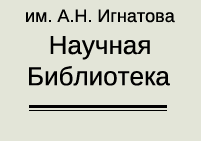НАУЧНАЯ БИБЛИОТЕКА - РЕФЕРАТЫ - Международная политика (english) - (реферат)
Международная политика (english) - (реферат)
Дата добавления: март 2006г.
GLOBE INTERNATIONAL president Takashi Kosugi established a Subcommittee on Low Emission Vehicles in his political party in February this year. On June 2. 2, the committee released an intermediary report with proposals on how the government could promote the use of low emission vehicles. The committee will put pressure on the Japanese government to take action along those lines. Chaired by Kosugi, the committee has 25 members. The report cites Californian legislation as one reason for the Japanese government to facilitate a breakthrough in electric vehicle development. From 1908, California will require over 2 percent of all cars sold in the state to be 100 percent emission free. The requirements will progressively rise. By the year 2003, more than 10 percent of cars must be of a zero emission type. Low-emission vehicles are still expensive and not satisfactory in terms of the distance they can run per charge. Many problems also remain with the technology of batteries, one problem being that they become environmentally hazardous waste when used up.
The report outlines three main objectives:
1) Price reductions due to higher demand; 2) Improved performance due to technical development; and 3) The creation of a social and economic environment for low emission vehicles. One idea is to make low-emission cars more visible and to provide special advantages for the users of such cars. The report suggests the introduction of car stickers to identify the cars as being different. Subsidies and tax breaks on cars as well as alternative fuels, special parking lots and lower tees on highways and other toll roads are some other proposals. Low-emission vehicles could be allowed to use street lanes reserved for buses. They could be used in conjunction with big events such as the up-coming Olympic Games in Nagano. GLOBE Russia has begun publishing a monthly newsletter to be distributed to the members of the Environment Committees of the Commonwealth of Independent States (CIS), the Parliaments and NGOs in Russia and in the CIS. The newsletter is in Russian. For copies, contactGLOBE Russia, 103265 Moscow, Georgievsky per. 2, off. 554, Tel. +7-(о95) 292. 61. 25, Fax +7-(o05)292. 19. 28, e-mail: globe. russia@sovcust. sprint. com Recycling of Packaging in Japan and Sweden OnJune 9, the Diet approved the Law to Promote the Separation, Collection and Reuse of Packaging Material in order to create a system to recover and recycle or reuse discarded containers and packing material. Household waste is an urgent problem for Japan. 1 he waste amounts to more than 50 million tons per year, with discarded packaging material accounting for 57 percent of this total. Total capacity of landfills in Japan is estimated to last for less than eight years. Landfills for the Tokyo metropolitan area are expected to lie already full by March 1996. According to this packaging recycling law, responsibility will be shared by consumers, local administrations and enterprises. Consumers will be required to separate used containers and wrapping from their garbage, local administration will be responsible for collecting it separately, and enterprises which produce or utilize the container or wrapping will be responsible for recycling the materials which have been collected. 1 his applies also to imported packaging or wrapping coming with imported goods. Similar legislation has been in effect in Sweden since October 1994. The Swedish Ordinance on Producer Liability for Packaging Material clearly places responsibility on the producers. They are required to provide consumers with a system for separating and collecting the packaging material and are also required to inform consumers about it. Local administrations are freed from the responsibility to collect and dispose of such materials as have been separated from other waste by consumers and producers in cooperation. The Japanese law applies to bottles, cans, paper, plastic and all other types of containers. The Swedish law specifies certain types of packaging and leaves out other possible materials such as textiles and wood. Japan does not set specific targets for any materials while Sweden sets national targets for each type of material to which the law applies. The Environment Protection Agency is then responsible for ensuring I hat all companies comply. In Japan, the recycling system is headed by The Ministry of Health and Welfare, which will establish and make public an overall plan for the collection of used packaging material and its remaking into new products. Local administrations are then required to establish, make public and execute local plans for the collection of discarded packaging. Consumers are required to separate the waste according to the guidelines set down by the local administrations. Finally, enterprises which produce or make use of packaging material will be responsible for recycling it after collection. Producers can apply to the Ministry of Health and Welfare for an authorization to recycle materials themselves or they can choose to pay for the services of a specialized corporation designated by the ministry. Such designated corporations will be available by January 1, 1997. In Sweden, industry created a similar solution entirely administrated by the business community. Four recycling companies were established. Any company can then become a member and pay packaging fees for recycling services. The recycling companies are owned by major Swedish industries and operate on a commercial but non-profit basis. They formed the "REPA-register" company to administer the memberships and fees, with 6, 000 companies already members. Those who do not join are checked by the Environment Protection Agency to make sure they are complying with the law in some other way.
| 
